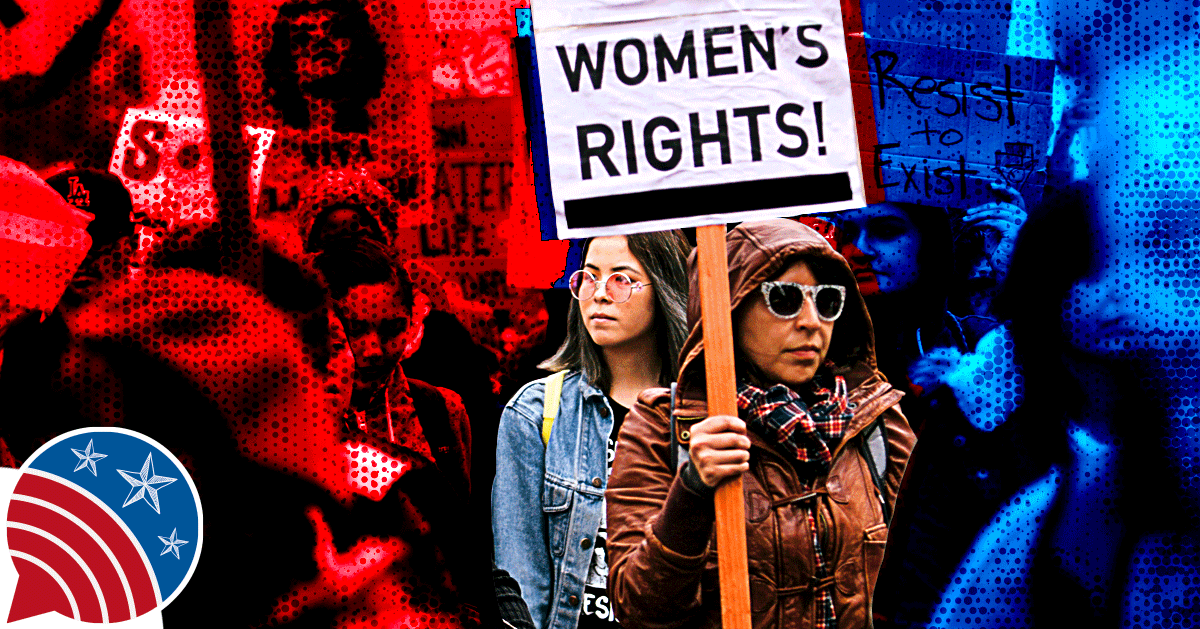
Women’s Rights
Paideia Seminar Plan
Launch Activity
Begin by asking participants if they are familiar with the modern context of gender inequality in the United States.
Have a brief class discussion to explore their understanding and examples of gender inequality in contemporary society. Discuss examples found in social, governmental, and/or economic structures. Introduce the Declaration of Sentiments to address the issue of gender inequity in the early United States.
Inspectional Read
Distribute the text, The Declaration of Sentiments. Discuss with participants what they anticipate the text is about. Have them number the paragraphs in the text. Then ask participants to read the text while highlighting unfamiliar words and phrases.
Background Information
The Seneca Falls Convention was a historic event in the United States that took place in Seneca Falls, New York, from July 19 to July 20, 1848. It was the first women's rights convention held in the country and marked a crucial moment in the early women's suffrage movement. The convention was organized primarily by two prominent activists, Elizabeth Cady Stanton and Lucretia Mott, along with several other dedicated reformers.
The main purpose of the Seneca Falls Convention was to address the social, political, and economic inequalities faced by women during that time. The attendees, both men and women, gathered to discuss and advocate for women's rights and suffrage—the right to vote.
One of the significant outcomes of the convention was the drafting of a seminal document known as the Declaration of Sentiments. This document, which was closely modeled after the United States Declaration of Independence, outlined the grievances and demands of women, asserting that all men and women are created equal and that women should be granted the same rights and privileges as men.
The Declaration of Sentiments specifically called for women's suffrage, equal educational opportunities, the right to own property, and an end to the societal restrictions that limited women to domestic roles. It also highlighted women's lack of legal rights, particularly in matters of marriage and divorce.
The Seneca Falls Convention was not without controversy, as advocating for women's rights was considered radical and controversial at the time. Nevertheless, the event was a critical milestone in the women's suffrage movement, inspiring and laying the groundwork for future activism and advocacy for gender equality.
The convention's impact extended beyond its immediate time frame, igniting a spark in the fight for women's rights and motivating many activists to join the cause. The efforts and determination of those who attended the Seneca Falls Convention paved the way for subsequent women's rights movements and played a vital role in eventually leading to the 19th Amendment to the U.S. Constitution, which granted women the right to vote in 1920.
Vocabulary
Have participants share the words and phrases they found unfamiliar while a volunteer lists them on the (interactive) whiteboard. Be sure to include:
- "born equal"
- "equal station"
- "great precept of nature"
- human rights
- "inalienable rights"
- laws of nature
- "sacred right"
Assign the words and phrases to groups of participants to research and define. Then have the groups share with the entire class and discuss until all participants are comfortable with the surface meaning of the text.
Analytical Read
Have participants read through the text selection again, slowly highlighting the three most impactful lines or sentences. Then, in the selections' margins, write notes on what makes those lines or sentences so compelling.
Define and State the Purpose of the Seminar
“A Paideia seminar is a collaborative, intellectual dialogue about a text, facilitated with open-ended questions. The main purpose of this seminar is to arrive at a fuller understanding of the textual ideas and values of ourselves and of each other.”
Describe the Responsibilities of the Facilitator and Participants
“I am primarily responsible for asking challenging, open-ended questions, and I will take a variety of notes to keep up with the talk turns and flow of ideas. I will help move the discussion along in a productive direction by asking follow-up questions based on my notes.“I am asking you to think, listen, and speak candidly about your thoughts, reactions, and ideas. You can help each other do this by using each other’s names.
“You do not need to raise your hands in order to speak; rather, the discussion is collaborative in that you try to stay focused on the main speaker and wait your turn to talk.
“You should try to both agree and disagree courteously and thoughtfully. For example, you might say, ‘I disagree with Joanna because…,’ focusing on the ideas involved, not the individuals.”
Have Participants Set a Personal Goal
“Now, please reflect on how you normally participate in a discussion as a group. What goal can you set for yourself that will help the flow and meaning of the seminar?“Please consider the list of personal participation goals – either on the Speaking and Listening Checklist or on the board.”
- To speak at least three times
- To refer to the text
- To ask a question
- To speak out of uncertainty
- To build on others’ comments
“Is there one that is relevant for you? Please choose one goal from the list, or that you feel is best, and commit to achieving it during the discussion we are about to have… Write down (or circle) your personal goal.”
Agree on a Group Goal
“For this seminar, I will suggest our group goal…” (Select display for all to see or have a brief discussion to decide and post the group goal.)
Opening (Identify Main Ideas From the Text)
- Which of the lines contains the strongest criticism of the gender standards of the time?
- What makes that particular line or quote so significant? (Spontaneous Discussion)
Core (Analyze Textual Details)
- Why do you think the organizers of the Seneca Falls Convention chose to model the Declaration of Sentiments after the United States Declaration of Independence? What message were they trying to convey?
- Why do you think the right to vote was such a central issue for women's rights activists at that time? How did achieving the right to vote impact the broader women's rights movement?
- The Declaration of Sentiments highlighted women's limited access to education during that era. How might education have been a key factor in empowering women and promoting gender equality?
- How do you think such gatherings and discussions like the Seneca Falls Convention contributed to raising awareness about gender inequality and mobilizing support for the cause? Could it have worked against this goal?
- In paragraph ten, the text reads, “In the covenant of marriage, she is compelled to promise obedience to her husband, he becoming, to all intents and purposes, her master–the law giving him power to deprive her of her liberty, and to administer chastisement.” What is the intended meaning of this quote?
- Why do you think some people resisted granting women equal rights, and what were the common arguments against the suffrage and women's rights movements?
Closing (Personalize and Apply the Ideas)
- How can the ideas presented in the Declaration of Sentiments be applied to current political debates or issues related to equal rights for women?
Transition to Writing
Participants should be encouraged to revisit notes they captured on the margins of their text selection, personal recording space, etc., and during the Launch Activity.
Writing Task
Today, women have gained many rights that were once denied to them, but challenges to gender equality still exist. How do you see the legacy of the Seneca Falls Convention and the Declaration of Sentiments in ongoing efforts for gender equality and women's rights in the modern world?
Extension Task
Reflecting on the historical context of the Seneca Falls Convention, what other social and political movements might have influenced the development of the women's rights movement, and how did women's rights activists collaborate with or diverge from other reform efforts?
- Suffrage at 100: A Visual History (Requires a New York Times subscription)






